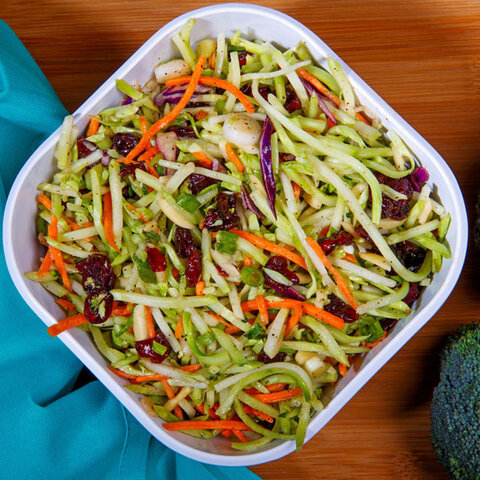
Winter is a wonderful season for spending time with friends and family and enjoying delicious holiday meals. However, amidst all the festivities, it is easy to forget about the importance of including fruits and vegetables in your eating plan. As an adult, it is recommended that you consume 1 ½ - 2 cups of fruit and 2 - 3 cups of vegetables each day.
Fresh fruits and vegetables are usually plentiful during the summer months when more are in season. When winter arrives, the availability of fresh produce diminishes. Don't fret, there are ways to eat healthy that won't break your budget. Here are helpful tips for incorporating fruits and vegetables into your winter meals:
- When you are asked to prepare a dish for a holiday gathering, opt for something that features fruits or vegetables. Bringing a fruit salad or roasted broccoli to a family event ensures you have a healthy option to eat. Additionally, you will be providing a nutritious dish for others, potentially encouraging them to make healthier food choices as well.
- Take a spin on a traditional dish you like to prepare by making it a bit healthier. Try cutting back on the amount of sugar or butter used in the recipe or swap it out for a different ingredient. Consider using olive oil instead of butter, as it contains unsaturated fats that benefit heart health. Additionally, try incorporating vegetables into the dish. For instance, add tomato salsa as a topping for chicken or toss extra carrots into a soup.
- Eat filling fruits or veggies as a snack! With many delicious foods available during the winter months, it is easy to overeat. To avoid this, try having a fruit or vegetable as snack before your meal. Whether you prefer crunchy celery and carrots or sweet apples with peanut butter, adding a small snack to your routine will help keep you from overeating and provide your body with valuable nutrients.
- Fill your plate with fruits and vegetables first. It is recommended that half of your plate should be filled with fruit and vegetables. When serving yourself, seek out the fruits and vegetables first and then add any additional foods you would like. This will help ensure that you are prioritizing your produce.
Adding enough fruits and vegetables into each meal can be challenging, but there are ways to manage. If you notice that your lunch lacked vegetables, try to ensure that your evening meal has a vegetable as a main dish. Whether it is adding vegetables to a pot roast or having fruit as dessert, finding small ways to add these foods into your diet can have a positive impact on your health!
While these tips may be catered more towards eating during the wintertime, they can be followed all year round. Ensuring that you prioritize consuming fruits and vegetables throughout the entire year is a great habit that provides your body with the necessary vitamins and minerals for it to thrive!
Recipe Ideas:
Sources:
Healthier Holidays in 1 – 2 – 3, Centers for Disease Control and Prevention. Dec. 30, 2021.
U.S. Department of Agriculture and U.S. Department of Health and Human Services. Dietary Guidelines for Americans, 2020-2025. 9th Edition. December 2020. Available at DietaryGuidelines.gov.
This article was written by Dani Higgins, Professional Student of Dietetics, University of Nebraska-Lincoln. It was updated in 2026.













